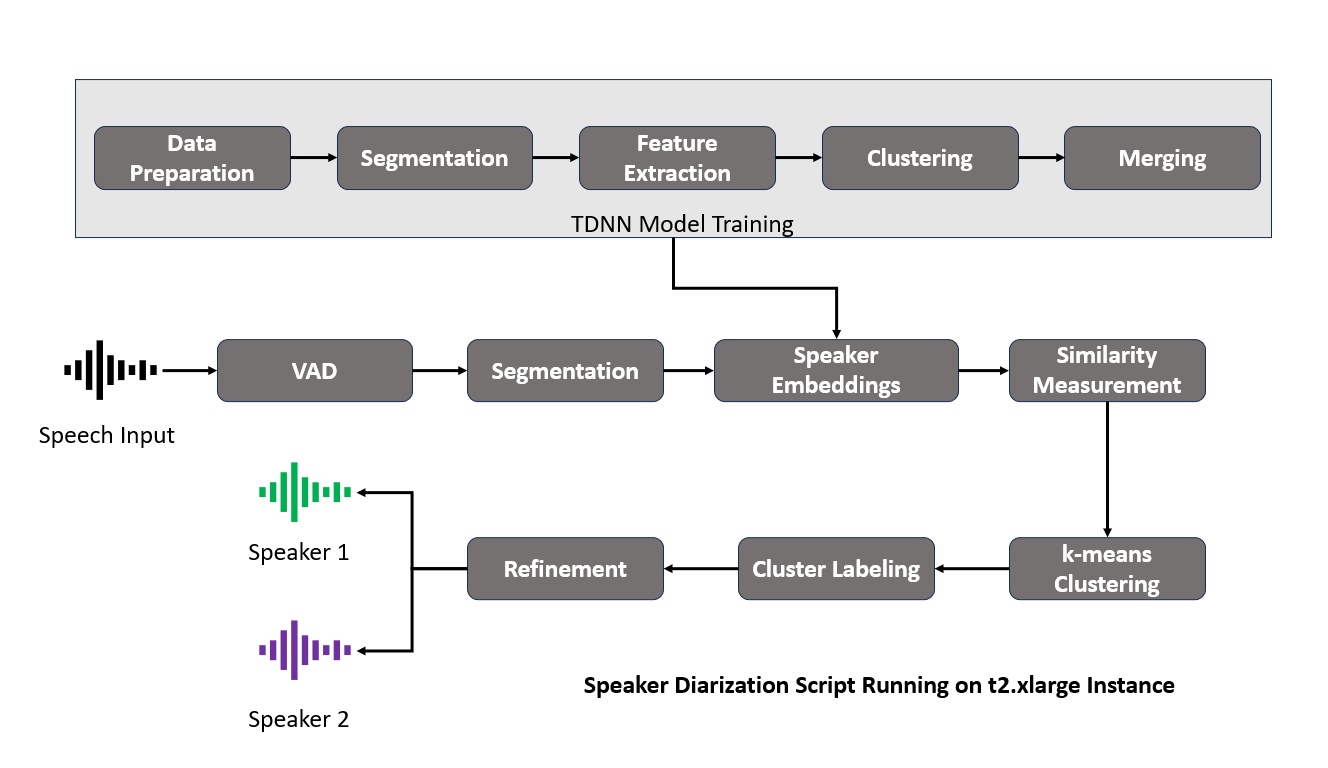Seamless Speaker Diarization System for Effective Conversation Transcription
Client
Our healthcare client, a leader in surgical services, sought to optimize operating room transcription. Embracing advanced speaker diarization, they aimed to enhance transcription accuracy during surgical procedures. The goal was to streamline post-operative analysis and improve medical documentation, ultimately elevating the quality of patient care through precise and reliable records.
Challenges
- To build a system capable of performing speaker diarization for a given audio file.
- The output should provide speaker-specific information about each speaker’s start and end time.
- Provide the duration for each speaker sequentially as per the occurrence in the given audio.
- Ensuring the diarization system adapts to changing acoustic conditions, handling unexpected variations, and maintaining accuracy in dynamic environments.
Approach
- We used Kaldi, an open-source Automatic Speech Recognition toolkit with the capability of training the models as required.
- Trained a TDNN-based x-vector model on common speech corpora using the ‘callhome’ recipe.
- Applied segmentation to capture key speech patterns and transitions between speakers, by dividing the audio recording into overlapping or non-overlapping segments.
- Extracted MFCC features from the segments to define the unique speech characteristics of different speakers.
- Mapped variable-length audio signals to fixed-length x-vector embeddings, encasing essential speaker-related information.
- Calculated similarity using a derived metric based on acoustic features, assessing resemblance between segment pairs.
- Employed clustering algorithms to categorize segments with similar acoustic traits, identifying potential speakers.
- Applied an iterative refinement process until speaker-homogeneous regions were obtained.
- Enhanced speaker diarization accuracy through iterative refinement of the model, using insights from preceding iterations.
Impact
- Achieved a low Diarization Error Rate (DER) of 4.3%, accurately identifying speakers.
- Streamlined post-operative analysis processes, resulting in a 40% reduction in the time required for reviewing and analyzing surgical transcripts.
- Integrated speaker diarization seamlessly into Electronic Health Record (EHR) systems, leading to a 30% reduction in data entry errors and ensuring accurate and synchronized medical records.
